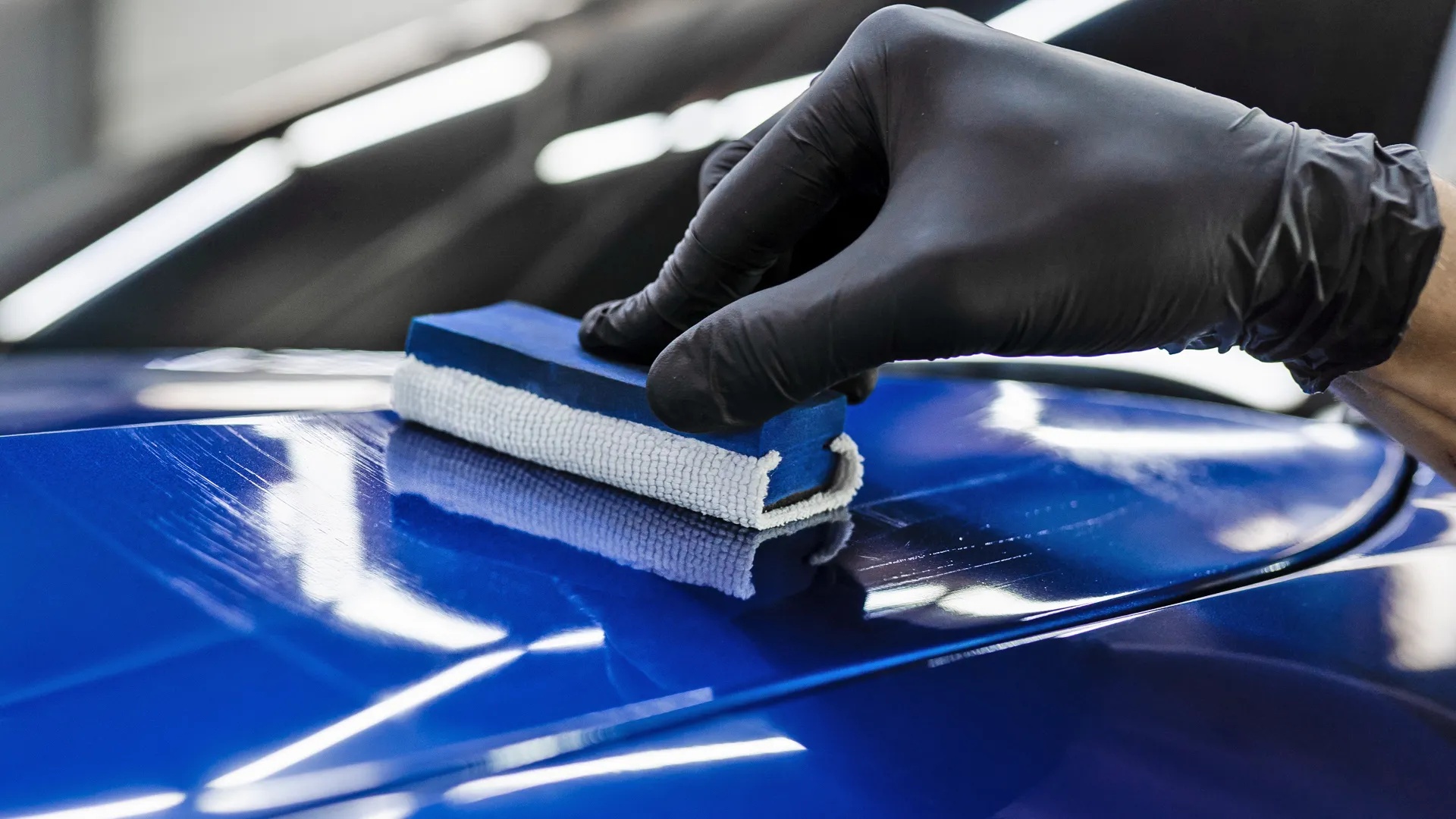Why Ceramic Coating Is the Ultimate Option for a Flawless Complete
Ceramic coating has become a leading service for those looking for a remarkable coating for their vehicles, thanks to its remarkable toughness and protective functions. This sophisticated liquid polymer not only bonds flawlessly with manufacturing facility paint yet also provides an awesome barrier against typical dangers such as scrapes, UV rays, and toxic wastes. In addition, its hydrophobic residential or commercial properties streamline upkeep while improving aesthetic allure. Understanding just how this technology contrasts to typical techniques and exploring its application subtleties can expose even much more about its worth. What elements truly set ceramic coating apart?
What Is Ceramic Finishing?

When applied appropriately, ceramic finishing develops a hydrophobic surface area that repels water and dust, making it simpler to preserve and clean up. Unlike conventional waxes or sealants, which typically use short-lived defense, ceramic finishes can last for several years, depending on the product quality and application technique. The process of applying ceramic layer calls for careful prep work, consisting of thorough cleaning and sometimes paint adjustment, to guarantee ideal bonding and efficiency.
Ceramic coatings are not limited to automotive surface areas; they can likewise be utilized on various products, including glass, steel, and plastics, providing a functional service for boosting protection. Overall, ceramic finishing stands for a considerable improvement in surface defense modern technology, combining both aesthetic and useful advantages for a large range of applications.
Benefits of Ceramic Covering
While numerous surface security options exist, the benefits of ceramic coating stand out because of its one-of-a-kind buildings and lasting performance. One of the main advantages is its extraordinary sturdiness. Ceramic Coating Philadelphia. Unlike standard wax or sealers that require regular reapplication, ceramic layers provide a durable layer that can last for numerous years, dramatically lowering upkeep efforts
One more remarkable advantage is enhanced security against ecological contaminants. Ceramic finishes develop a hydrophobic surface area that repels water, dust, and different toxins, making it much easier to clean up. This function not just maintains the vehicle's appearance however additionally reduces the risk of corrosion and oxidation, particularly in severe weather condition problems.
Moreover, ceramic finishings use premium resistance to UV rays, stopping fading and destruction of paint in time. This UV security is vital for maintaining the visual worth of surfaces and automobiles revealed to direct sunlight.
Furthermore, the shiny surface accomplished with ceramic finish improves the total visual allure, giving surface areas a showroom-quality luster. On the whole, ceramic finishes represent a significant innovation in surface area security modern technology, providing enduring benefits that satisfy both aesthetic and practical needs.
Exactly How It Works
Recognizing the science behind ceramic coverings exposes how they provide such amazing security and longevity. At its core, a ceramic finishing is a fluid polymer that chemically bonds with the lorry's factory paint.
The application procedure entails several actions, including surface preparation, which is crucial to attaining optimum bond. As soon as used, the layer undergoes a curing process, throughout which it hardens and creates a semi-permanent bond with the paint surface area. This bond is what differentiates ceramic finishes from standard waxes and sealants, providing a longer-lasting protective barrier that can withstand for many years.
Additionally, the thickness of the finish can boost its safety qualities, guaranteeing that it can withstand harsh problems. Ultimately, the scientific research of ceramic coatings incorporates advanced products with innovative application techniques to supply an exceptional degree of protection and visual improvement for vehicles.
Contrast With Typical Techniques
When contrasted to standard paint security approaches such as waxes and sealers,The advantages of ceramic finishings come to be especially apparent. While waxes use a short-lived shine, typically lasting a couple of weeks to a couple of months, ceramic coatings offer a lasting protective layer that can endure for a number of years. This durability considerably minimizes the regularity of reapplication, making ceramic finishings an extra economical option in time.
Additionally, traditional approaches frequently need extensive prep work and numerous applications to achieve a satisfying degree of protection. On the other hand, Look At This ceramic coatings bond at a molecular degree with the automobile's surface area, creating a robust guard against environmental pollutants like UV rays, acid rainfall, and road salts. This bond improves the automobile's resistance to scratches and swirl marks, which prevail with traditional waxes and sealants.
In addition, the hydrophobic residential or commercial properties of ceramic finishes fend off water and dirt, bring about simpler cleansing and upkeep. In comparison, wax and sealant-treated surfaces can attract gunk, demanding more frequent cleaning - Ceramic Coating Philadelphia. Overall, ceramic finishings not only offer exceptional defense however likewise deliver a much more long-lasting and aesthetically attractive coating, developing them as the recommended option for discerning vehicle owners
Application and Maintenance Tips

Using a foam applicator, use the layer in little sections, following the producer's standards concerning density and overlap. Permit sufficient treating time between coats, commonly 1 day, to make certain correct bonding. After application, it is vital to avoid exposure to water or extreme components for at the very least a week to enable the finish to totally heal.
For upkeep, wash the lorry frequently with pH-balanced soaps and avoid abrasive products. Touchless automobile cleans are recommended to lessen scratching. Additionally, using a ceramic upkeep spray can enhance the finish's hydrophobic residential properties and long life. Normal evaluations for any type of indications of wear will help preserve the finishing's stability and maintain that immaculate surface.
Verdict
In final thought, ceramic layer arises as an exceptional choice for achieving a perfect automotive surface. By developing a durable bond with factory paint, ceramic layer successfully shields versus scrapes, UV rays, and ecological contaminants.
